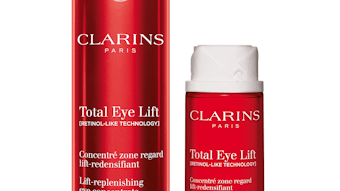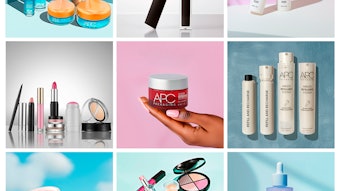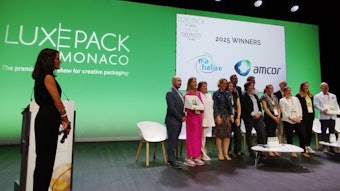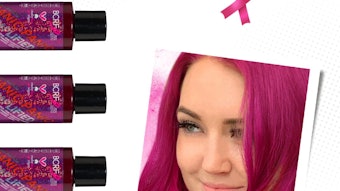- A lifestyle brand embodies the values and personality of its audience and speaks to them in a targeted and authentic way. In packaging, this is particularly important as the look and feel of the package greatly influences the purchase decision.
- There is no formula for how to connect to consumers emotionally in packaging, but there are three main components of communication that should work together to create a strong brand presence: the visual, the verbal and the tactile.
When building any brand, one of the first and most critical steps to take is to identify the target audience. In addition to looking at basic demographics, it is also essential to conduct thorough research to understand the primary and secondary audience’s lifestyle and behaviors. This valuable information is the foundation to the brand development process—without it, it is impossible to create a meaningful connection to that market and build a successful lifestyle brand.
A lifestyle brand embodies the values and personality of its audience and speaks to them in a targeted and authentic way. In packaging, this is particularly important as the look and feel of the package greatly influences the purchase decision. In many cases, the packaging is the only touch point a consumer sees before making a purchase. If a package can successfully communicate the brand positioning in a meaningful way, the target consumer will automatically be drawn to the product.
The key to creating a successful lifestyle brand, no matter what the touch point, is to connect with the audience on an emotional level. This is particularly important for female-targeted brands, as women are sensorial in nature. For the brand, this means transcending the functional benefits (i.e. ingredients) to communicate the emotional and self-expressive benefits—or how the product or brand actually makes her feel. Particularly in the beauty industry where many products are “apples to apples,” if the audience can make an emotional connection to the brand, then this can be the difference in standing out in the crowded marketplace. If the brand matches the audience’s values, they will more likely gravitate toward it—and will pay more for the product.
Communicating benefits, whether functional or emotional, is easier said than done on packaging. In most cases, there is a very small billboard space to tell the full story. Additionally, there is often no control on where the product will be merchandised on the shelf next to competitors. For this reason, it is essential to conduct competitive research to learn what the brand’s competitors are doing visually, how they are communicating to consumers and what physical packaging trends may be taking place. By conducting a thorough audit of the target consumer and the competition, a brand positioning can be established that will act as the foundation for the brand and help to uniquely represent the brand across all brand touch points, including packaging.
There is no formula for how to connect to consumers emotionally in packaging, but there are three main components of communication that should work together to create a strong brand presence: the visual, the verbal and the tactile. Connecting to a brand authentically is similar to connecting to another person, and the same type of first impressions in packaging can make a difference. First impressions can be summed up with three basic questions: What do they look like? What do they sound like? What do they feel like?
Visual
The first and most obvious way to reflect brand positioning in packaging is visual communication. The packaging should visually express both product benefits and emotional benefits, and should communicate the meaning of brand and brand personality. This can be done through a successful marriage of all the elements on the package—including logo mark, graphics, illustrations, photographs and color palettes.
The core concept of all of these components should work together in harmony to create a unique story or mood that is proprietary to the brand. Although it’s important to take note of trends and color fads, ultimately this shouldn’t matter—the most important goal is to authentically express what the brand is about visually. If the visual expression is accurate, the target market will respond.
Verbal
Verbal communication is one of the most overlooked components to brand messaging in packaging, but can be one of the most important. Since most packaging can’t talk, this is mostly done through naming and copy tone. Good copy should mimic the tone of the brand and connect to the audience emotionally—just like a great visual expression. Many brands have picked up on the importance of verbal communication and have made this the centerpiece of their packaging. For example, Benefit Cosmetics is known for the combination of clever product naming and visual wit throughout its entire product lineup, and its verbal style has become one of the most unique characteristics of its brand. Naming, descriptions and taglines that accurately express the brand positioning can make a huge difference in differentiating the brand and connecting to the consumer emotionally.
Tactile
With the growth of alternatives to print media in today’s marketing landscape, packaging is one of the only brand touch points left involving physical consumer interaction. It has been documented that if consumers physically pick up the product, they are more likely to buy it. Women in particular are incredibly tactile and appreciate and respond to detail, so creating a sensorial experience is particularly important in female-targeted categories such as the beauty industry. This can be done with visual or literal texture, or with materials that speak to product and brand properties.
Production techniques—including embossing, foil stamping and unique paper stocks—can greatly enhance a brand message, create dimension and ultimately encourage the consumer to pick up the product. Unique or sculptural forms in the form of custom components can also help a brand to stand out in the crowded marketplace.
Successfully executing these three first packaging impressions will help establish your brand as the lifestyle brand that embodies the values and personality of your target consumers in an authentic way.
Aniko Hill is the creative director of The Kitchen Collaborative, which she founded with a determination to innovate the traditional creative business methodology. Her distinct creative and professional vision has produced award-winning work with quantifiable results for clients in categories including health and beauty, fashion, home products and pet care. Her work creating premium lifestyle brands for the sophisticated female market has been featured in top industry publications such as Print, CPC Packaging, and HOW magazines. Hill is also an expert editorial contributor, writing for trade publications such as GCI, Package Design and Beauty Packaging magazines. Graphic Design USA recognized Hill as one of the People to Watch in 2008.









